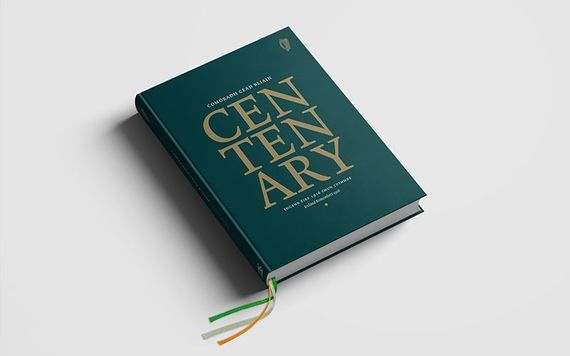Centenary / Comoradh Cead Bliain: Ireland remembers 1916 / Tugann Eire 1916 chun cuimhne
edited by Ronan McGreevy (Government Publications, €25)
Felix M. Larkin
Most people take the view that the centenary commemoration of the 1916 Rising was a “Goldilocks moment”. Whereas the 50th anniversary events in 1966 were too hot, and those for the 75th anniversary in 1981 too cold, 2016 was just right.
It was not, in any event, as bad as it might have been – or as some feared it would be. Credit must be given for that to the government’s ‘Decade of Commemorations’ advisory committee, under the chairmanship of Maurice Manning, and to Minister Heather Humphreys T.D, for heeding the committee’s advice.
Now the government has published this lavish record of the commemoration, edited by journalist Ronan McGreevy who covered the events of the commemoration as they happened with authority and aplomb.
Testimonies
The volume is a miscellany of reportage, photographs and testimonies from those who were involved. It follows the events chronologically, beginning with the ceremony in Glasnevin cemetery to recall the funeral of O’Donovan Rossa in 1915 and ending with the launch of the Creative Ireland Programme in December 2016.
This programme is designed to harness for future cultural and other projects what Minister Humphreys describes as “the genuine energy and remarkable level of citizen engagement generated by the centenary programme”.
The most poignant image in the volume is undoubtedly that of former Taoiseach the late Liam Cosgrave at An Post’s Witness History exhibition lost in thought in front of the photograph of his father, W.T. Cosgrave, formally opening the restored GPO in 1929.
Perhaps the most uplifting item is an account of the 12-year-old great-granddaughter of Seán Connolly, the first rebel to die in the Rising, laying flowers at the gates of Dublin Castle in memory of Constable James O’Brien, the unarmed policeman whom Connolly shot dead at that location on Easter Monday 1916.
The volume includes an extract from the homily delivered by Archbishop Diarmuid Martin at the State ceremony in Arbour Hill on 24 April 2016, in which he spoke about the Capuchin priest, Fr Columbus Murphy, visiting Pearse when he was in detention in Arbour Hill prison after the Rising. Fr Murphy remembered Pearse saying: “Oh Father, the loss of life and the destruction, but please God it will not be in vain”.
On the other hand, in an extract from a talk given by Roy Foster at the conference on the Rising in NUI Galway in November 2016, we are reminded that “the emphasis on historical victimhood and oppression which was so marked in the rhetoric of the [Irish] revolution obscures the fact that in Edwardian Ireland the obvious forms of oppression by England were in the past”.
It is too early to assess the enduring impact, if any, of the centenary commemoration. Wisely, this volume does not attempt to do that. When, however, in times to come historians look back on these events, this volume will be an indispensible source of information. In the meantime, we can enjoy it as a beautifully-produced memento of events in which many of us participated.



